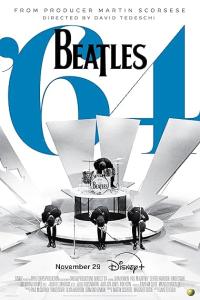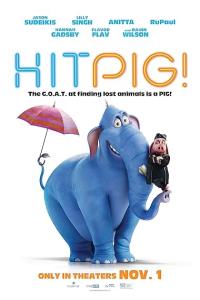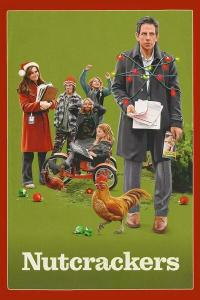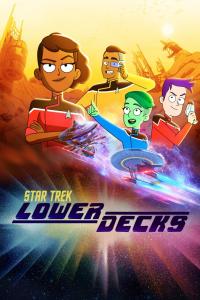Torrent details for "DC.Wings.Strange.Planes.Series.1.2of6.Parasites.x264.AC3.MVGroup.org.mkv" Log in to bookmark
Controls:
Category:
Language:
 English
EnglishTotal Size:
734.48 MB
Info Hash:
05e91c6440dc4409bf980d6832241951a6434216
Added By:
Added:
23-10-2020 18:33
Views:
476
Health:

Seeds:
28
Leechers:
3
Completed:
241
Strange Planes: Series 1
Technology Documentary hosted by Luke Swann, published by Discovery Channel broadcasted as part of DC Wings series in 1990 - English narration

Information
------------------------------
Strange Planes have odd shapes, interesting tales. From the highly successful series "Wings" on The Discovery Channel comes the six-volume series "Strange Planes." For aviation buffs, this collection is an insightful look at the history of aircraft, sometimes amusing, sometimes bizarre and at times astonishing, yet always interesting.
The efforts of aircraft designers, whether resulting in failure and folly or remarkable achievement, are chronicled into one-hour episodes. The flights of fancy portrayed in the STRANGE PLANES collection represent both the triumphs and the follies of pioneers taking aviation to--and sometimes beyond--the edge of technical feasibility and human imagination.
There are a few of the many strange and bizarre forms that aircraft design has taken on the road to the future. Some of these designs were revolutionary in their day but now are not so weird as they seemed. "Strange Planes" portray the fanciful or eccentric plus the blind alleys of aviation. There is a fascinating story behind every one of these radical designs, and each is an entertaining salute to man's ingenuity, and determination to reach for the sky.
The "Strange Planes" series was produced in Australia and aired as part of The Discovery Channel's most highly rated series, "Wings," during its initial airing.
Directed by Luke Swann; Executive Producer Phil Osborn; Network Projects Ltd Production
2) Parasites
From the launching and retrieving of planes by dirigibles in the early 1900s to piggy-backing and today's space shuttle.
Piggybacking one plane on another is not an impossible ambition, as shown by the success of the Space Shuttle. However this episode documents that the pursuit of this ambition has been long and challenging.
Nicknamed for their ability to hitch a ride, parasites represent enormous technological breakthroughs. Used for everything from faster mail service to extra escorts, parasites have evolved. Being able to ride on a mother craft extended these planes' potential.
In the beginning, Curtis fighters hid inside dirigibles. Later, parasite aircraft launched out of giant bombers to protect the plane. Now, the space shuttle itself counts as a parasite.
Strange Planes offers a detailed history of these life-saving inventions.
Screenshots
------------------------------
[img]https://docuwiki.net/thumb.php?f=Strange-Planes-Series-1-Screen0.jpg&w=120[/img]
[img]https://docuwiki.net/thumb.php?f=Strange-Planes-Series-1-Screen1.jpg&w=120[/img]
[img]https://docuwiki.net/thumb.php?f=Strange-Planes-Series-1-Screen2.jpg&w=120[/img]
[img]https://docuwiki.net/thumb.php?f=Strange-Planes-Series-1-Screen3.jpg&w=120[/img]
[img]https://docuwiki.net/thumb.php?f=Strange-Planes-Series-1-Screen4.jpg&w=120[/img]
[img]https://docuwiki.net/thumb.php?f=Strange-Planes-Series-1-Screen5.jpg&w=120[/img]
[img]https://docuwiki.net/thumb.php?f=Strange-Planes-Series-1-Screen6.jpg&w=120[/img]
[img]https://docuwiki.net/thumb.php?f=Strange-Planes-Series-1-Screen7.jpg&w=120[/img]
[img]https://docuwiki.net/thumb.php?f=Strange-Planes-Series-1-Screen8.jpg&w=120[/img]
[img]https://docuwiki.net/thumb.php?f=Strange-Planes-Series-1-Screen9.jpg&w=120[/img]
[img]https://docuwiki.net/thumb.php?f=Strange-Planes-Series-1-Screen10.jpg&w=120[/img]
[img]https://docuwiki.net/thumb.php?f=Strange-Planes-Series-1-Screen11.jpg&w=120[/img]
[img]https://docuwiki.net/thumb.php?f=Strange-Planes-Series-1-Screen12.jpg&w=120[/img]
[img]https://docuwiki.net/thumb.php?f=Strange-Planes-Series-1-Screen13.jpg&w=120[/img]
[img]https://docuwiki.net/thumb.php?f=Strange-Planes-Series-1-Screen14.jpg&w=120[/img]
[img]https://docuwiki.net/thumb.php?f=Strange-Planes-Series-1-Screen15.jpg&w=120[/img]
Technical Specs
------------------------------
Video Codec: x264 CABAC High@L4
Video Bitrate: 2 018 Kbps
Video Resolution: 704x544
Display Aspect Ratio: 1.294
Frames Per Second: 25.000 fps
Audio Codec: AC3
Audio Bitrate: 192 kb/s CBR 48000 Hz
Audio Streams: 2
Audio Languages: english
RunTime Per Part: 46 min - 54 min
Number Of Parts: 6
Part Size: 734 MB - 863 MB
Source: DVD
Encoded by: DocFreak08
Links
------------------------------
Source: https://docuwiki.net/index.php?title=Strange_Planes:_Series_1
Technology Documentary hosted by Luke Swann, published by Discovery Channel broadcasted as part of DC Wings series in 1990 - English narration

Information
------------------------------
Strange Planes have odd shapes, interesting tales. From the highly successful series "Wings" on The Discovery Channel comes the six-volume series "Strange Planes." For aviation buffs, this collection is an insightful look at the history of aircraft, sometimes amusing, sometimes bizarre and at times astonishing, yet always interesting.
The efforts of aircraft designers, whether resulting in failure and folly or remarkable achievement, are chronicled into one-hour episodes. The flights of fancy portrayed in the STRANGE PLANES collection represent both the triumphs and the follies of pioneers taking aviation to--and sometimes beyond--the edge of technical feasibility and human imagination.
There are a few of the many strange and bizarre forms that aircraft design has taken on the road to the future. Some of these designs were revolutionary in their day but now are not so weird as they seemed. "Strange Planes" portray the fanciful or eccentric plus the blind alleys of aviation. There is a fascinating story behind every one of these radical designs, and each is an entertaining salute to man's ingenuity, and determination to reach for the sky.
The "Strange Planes" series was produced in Australia and aired as part of The Discovery Channel's most highly rated series, "Wings," during its initial airing.
Directed by Luke Swann; Executive Producer Phil Osborn; Network Projects Ltd Production
2) Parasites
From the launching and retrieving of planes by dirigibles in the early 1900s to piggy-backing and today's space shuttle.
Piggybacking one plane on another is not an impossible ambition, as shown by the success of the Space Shuttle. However this episode documents that the pursuit of this ambition has been long and challenging.
Nicknamed for their ability to hitch a ride, parasites represent enormous technological breakthroughs. Used for everything from faster mail service to extra escorts, parasites have evolved. Being able to ride on a mother craft extended these planes' potential.
In the beginning, Curtis fighters hid inside dirigibles. Later, parasite aircraft launched out of giant bombers to protect the plane. Now, the space shuttle itself counts as a parasite.
Strange Planes offers a detailed history of these life-saving inventions.
Screenshots
------------------------------
[img]https://docuwiki.net/thumb.php?f=Strange-Planes-Series-1-Screen0.jpg&w=120[/img]
[img]https://docuwiki.net/thumb.php?f=Strange-Planes-Series-1-Screen1.jpg&w=120[/img]
[img]https://docuwiki.net/thumb.php?f=Strange-Planes-Series-1-Screen2.jpg&w=120[/img]
[img]https://docuwiki.net/thumb.php?f=Strange-Planes-Series-1-Screen3.jpg&w=120[/img]
[img]https://docuwiki.net/thumb.php?f=Strange-Planes-Series-1-Screen4.jpg&w=120[/img]
[img]https://docuwiki.net/thumb.php?f=Strange-Planes-Series-1-Screen5.jpg&w=120[/img]
[img]https://docuwiki.net/thumb.php?f=Strange-Planes-Series-1-Screen6.jpg&w=120[/img]
[img]https://docuwiki.net/thumb.php?f=Strange-Planes-Series-1-Screen7.jpg&w=120[/img]
[img]https://docuwiki.net/thumb.php?f=Strange-Planes-Series-1-Screen8.jpg&w=120[/img]
[img]https://docuwiki.net/thumb.php?f=Strange-Planes-Series-1-Screen9.jpg&w=120[/img]
[img]https://docuwiki.net/thumb.php?f=Strange-Planes-Series-1-Screen10.jpg&w=120[/img]
[img]https://docuwiki.net/thumb.php?f=Strange-Planes-Series-1-Screen11.jpg&w=120[/img]
[img]https://docuwiki.net/thumb.php?f=Strange-Planes-Series-1-Screen12.jpg&w=120[/img]
[img]https://docuwiki.net/thumb.php?f=Strange-Planes-Series-1-Screen13.jpg&w=120[/img]
[img]https://docuwiki.net/thumb.php?f=Strange-Planes-Series-1-Screen14.jpg&w=120[/img]
[img]https://docuwiki.net/thumb.php?f=Strange-Planes-Series-1-Screen15.jpg&w=120[/img]
Technical Specs
------------------------------
Video Codec: x264 CABAC High@L4
Video Bitrate: 2 018 Kbps
Video Resolution: 704x544
Display Aspect Ratio: 1.294
Frames Per Second: 25.000 fps
Audio Codec: AC3
Audio Bitrate: 192 kb/s CBR 48000 Hz
Audio Streams: 2
Audio Languages: english
RunTime Per Part: 46 min - 54 min
Number Of Parts: 6
Part Size: 734 MB - 863 MB
Source: DVD
Encoded by: DocFreak08
Links
------------------------------
Source: https://docuwiki.net/index.php?title=Strange_Planes:_Series_1















































